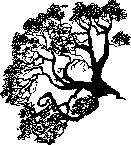The Majestic Arbutus: Victoria, B.C.’s Ornamental Gem
Arbutus menziesii—also called Madrone, Madrona, or Bearberry—is instantly
recognizable for its rich orange‑red bark that peels to reveal a smooth,
green‑silvery underlayer. This glossy evergreen stands out visually and
ecologically, making it a favorite for homeowners and landscapers across
Victoria, B.C. Below you’ll find its history, key features, care
requirements, and the many benefits it brings to our coastal environment.
A Glimpse into the Past
Native to North America’s Pacific coast, the Arbutus has thrived from
British Columbia to California for centuries. Indigenous communities used
its berries for food and its durable wood for tools and firewood, cementing
the tree’s cultural importance long before modern landscaping embraced its
beauty.
A Botanical Marvel: Distinctive Features
Height & Spread
- Height: 10 – 25 m (33 – 82 ft); up to 30 m (98 ft) in ideal conditions.
- Canopy Spread: 12 – 20 m (40 – 65 ft).
Bark Characteristics
- Thin, orange‑red bark peels in sheets to expose a smooth, green‑silvery layer.
- Older trunks develop gray‑brown bark near the base.
Leaf Description
- Thick, waxy, elliptical leaves (7 – 15 cm long; 4 – 8 cm wide).
- Glossy dark‑green above, lighter gray‑green beneath.
- Evergreen—leaves persist for several years before shedding.
Flowers & Fruit
- Flowers: Small white‑to‑pink bell‑shaped blooms in spring.
- Fruit: Bright red berries in autumn—essential wildlife food.
Arbutus in Victoria, B.C.
Greater Victoria’s mild, coastal climate and well‑drained, lime‑free soils
are perfect for Arbutus menziesii. It tolerates dry, rocky, even
saline sites but demands full sun; shade will stunt or
kill it.
Planting & Care Guide
1. Choosing the Right Location
Full sun; sharply drained, lime‑free soil; avoid low, soggy areas.
2. Planting Techniques
- Transplant seedlings while small; large specimens rarely survive moves.
- Dig a hole twice the root‑ball width but no deeper.
- Set the root crown level with the surrounding soil and water thoroughly.
3. Watering & Fertilization
Once established, Arbutus is drought‑tolerant and usually needs no
supplemental irrigation or fertilizer. During the first 2–3 years, keep
soil moist (not waterlogged).
4. Pruning
Prune only in late winter or early spring, removing dead or diseased wood.
Avoid wet‑weather pruning to limit disease spread, and minimize soil
disturbance around the roots.
Environmental Benefits
- Erosion Control: Extensive roots stabilize slopes.
- Wildlife Habitat: Berries feed birds; branches provide nesting sites.
- Carbon Sequestration & Air Purification: Like all trees, it locks away CO₂ and cleans the air.
Conservation & Stewardship
Although listed as “Least Concern” by the IUCN, local Arbutus populations
face threats from fire suppression, urban development, and invasive plants
(Scotch broom, gorse). Protect them through responsible pruning, drainage
management, and invasive‑species control.
Quick Reference
Common Names
Madrone, Madrona, Madroño, Bearberry.
Scientific Name
Arbutus menziesii
Ideal Site Conditions
- Dry, rocky, lime‑free soil
- Full sun
- Excellent drainage
Gallery
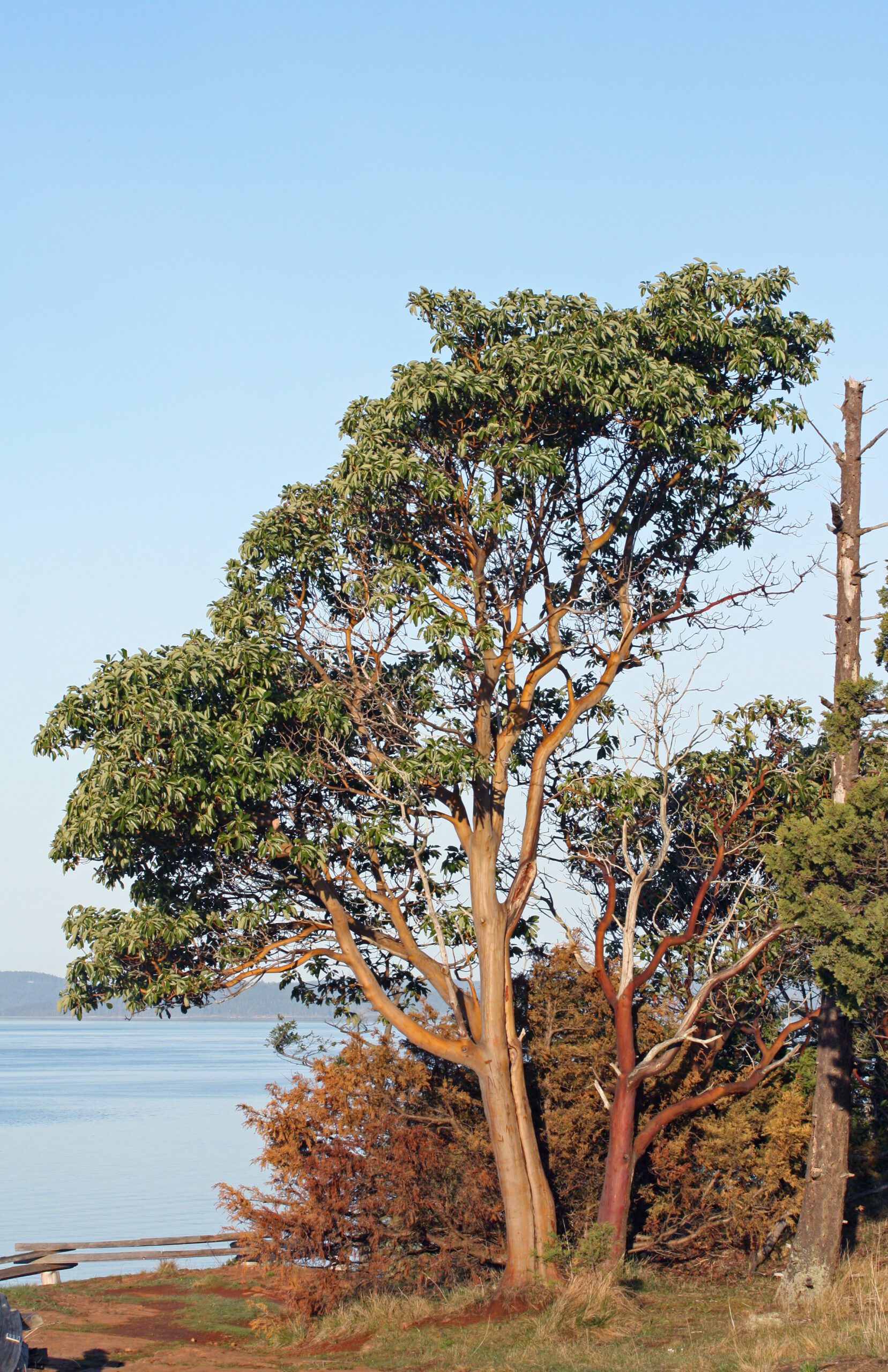
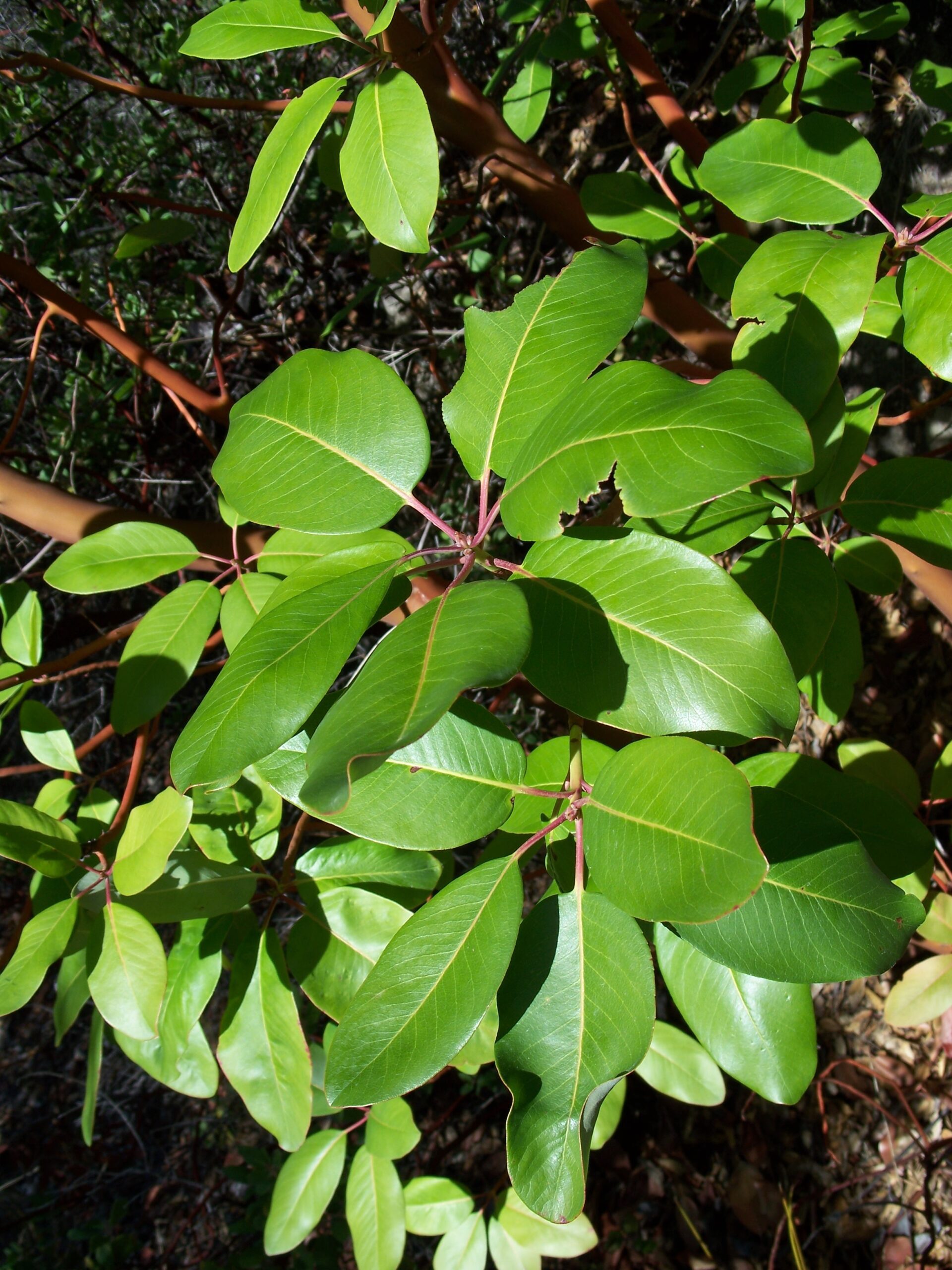
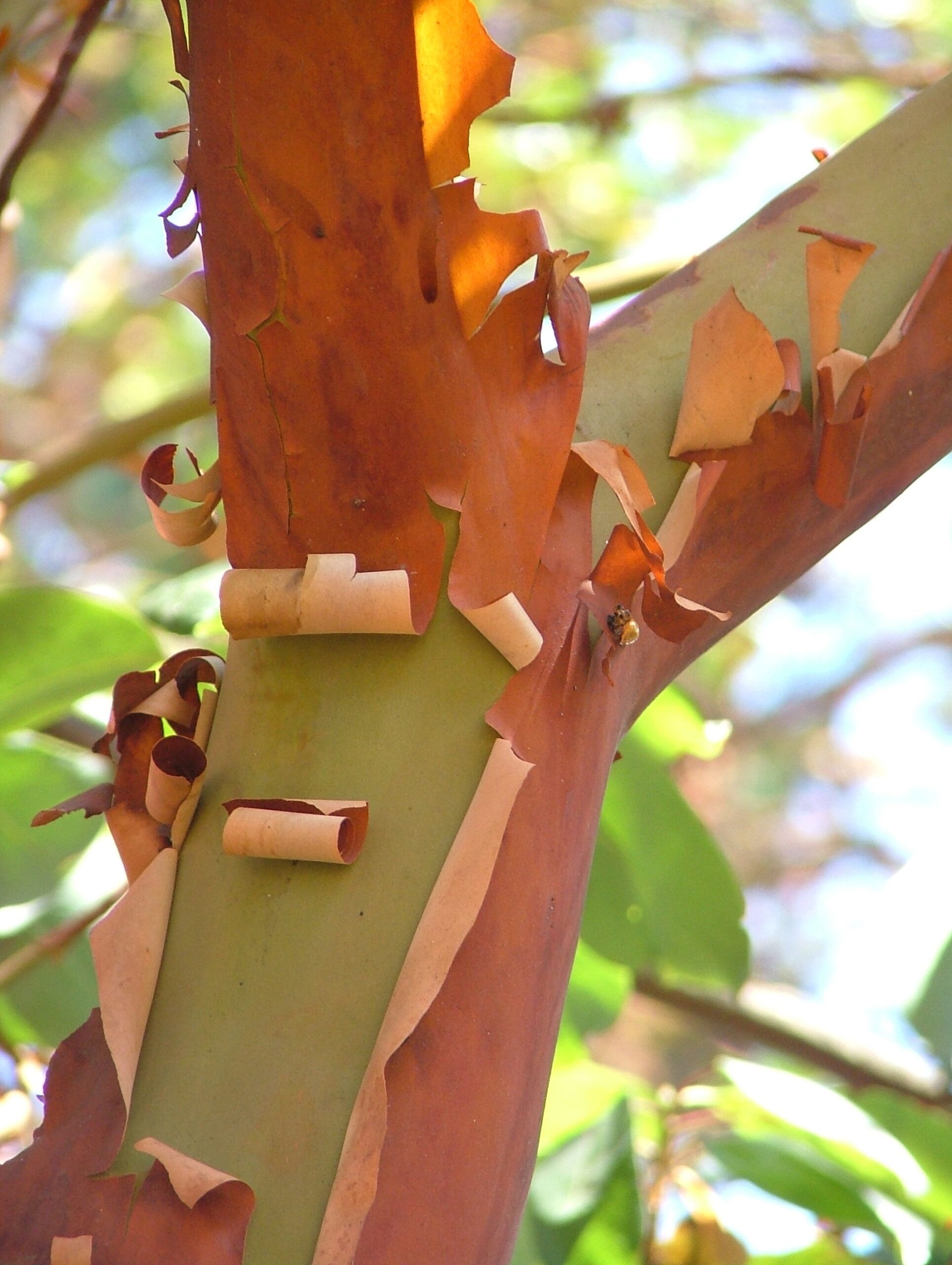
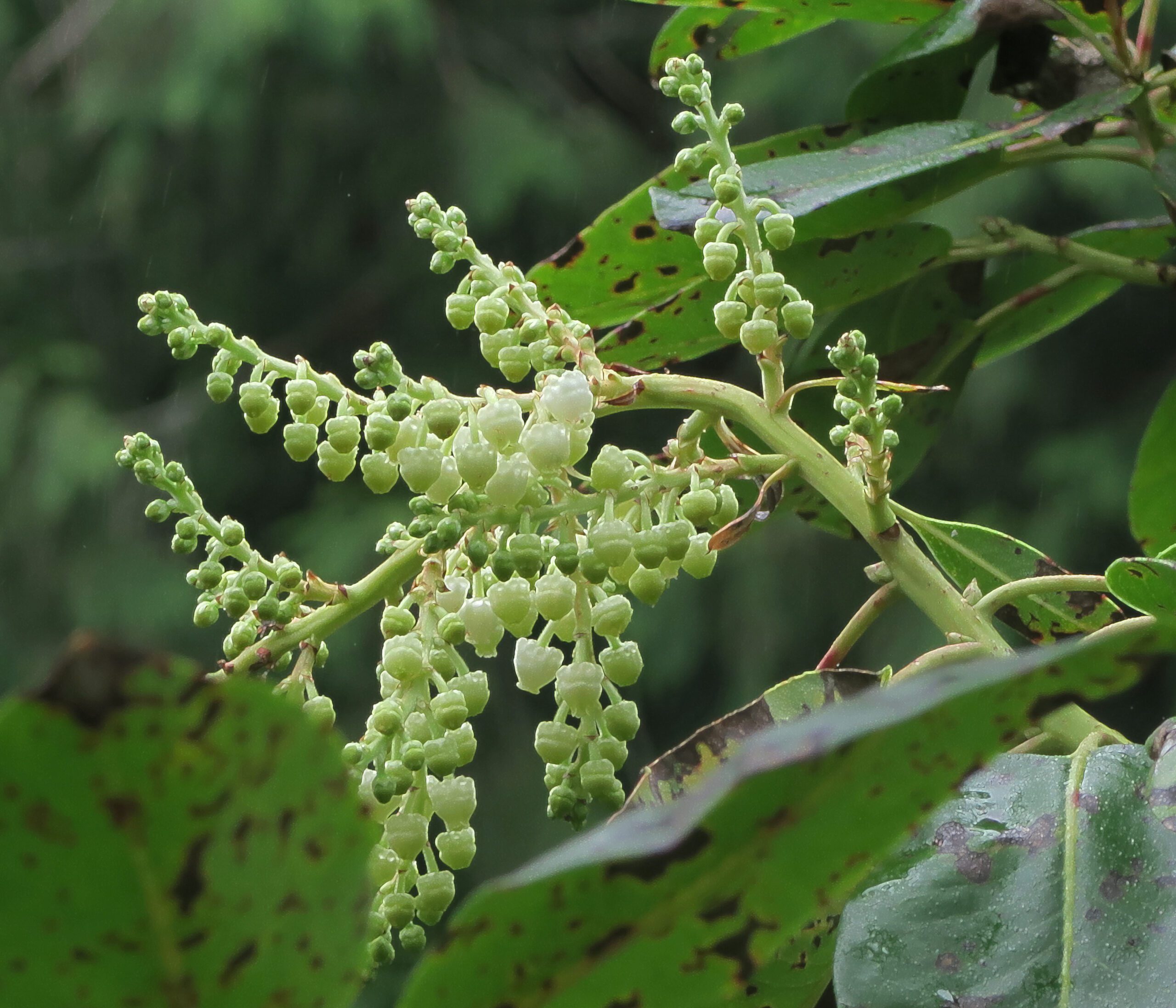
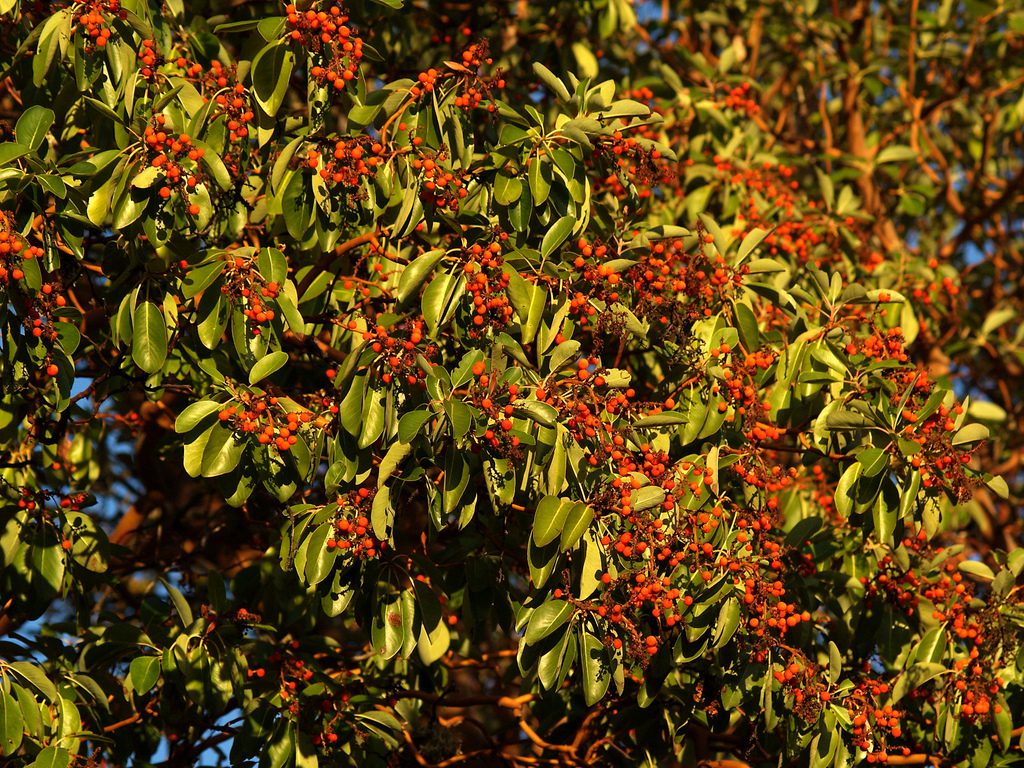
Common Diseases on Vancouver Island
- Arbutus Leaf & Twig Blight (Nattrassia mangiferae)—black lesions, leaf drop, twig dieback.
- Fungal Cankers (Phytophthora spp., Fusicoccum spp.)—sunken cankers girdle branches.
- Root Rot (Armillaria mellea)—weakens the root system.
- Madrone Psyllid (Trioza arbuti)—causes leaf curling and distortion.
Pro Tip: Prune only in dry weather, ensure excellent drainage, and avoid disturbing the root crown.
Uses
Ornamental
Winner of the Royal Horticultural Society’s Award of Garden Merit.
Timber
Dense, durable wood valued for flooring, veneer, and high‑heat firewood.
Other
- Berries edible raw or cooked; previously used for necklaces and fishing bait.
- Charcoal from Arbutus wood was historically used for gunpowder.
Sources & Further Reading
- USDA Forest Service – Pacific Madrone
- Royal Horticultural Society – Arbutus menziesii
- Washington Native Plant Society – Pacific Madrone
- CalFlora Database – Pacific Madrone
- American Forests – Pacific Madrone Conservation
- University of Victoria – Arbutus Tree Health Issues
- BC Ministry of Forests – Arbutus Disease Guide
Need Help with Your Arbutus?
For expert advice or professional tree services in Victoria, contact Victoria Trees
today. Call or text Scott at
250‑220‑9298, or tap the button below.
